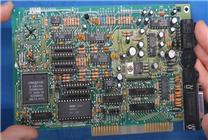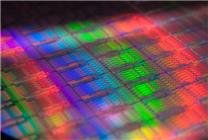Reviving a Legend: The Sound Blaster 2.0 Sound Card Resurrected
Summary:
- A Sound Blaster 2.0 sound card, a pioneer in audio technology, has been successfully repaired, reviving its rich legacy after 30 years.
- The sound card combines FM synthesis with real-time sound sampling, enhancing gaming and multimedia experiences.
- The revival underscores the significance of DMA functionality, which transformed audio data handling in early computing.
In a remarkable achievement for retro tech enthusiasts, an overseas blogger known as Adrian has successfully revived an iconic piece of audio history: the Sound Blaster 2.0 sound card. This legendary device, originally released in 1994, has been a cornerstone for audio in personal computing and remains celebrated for its innovative features.
The Sound Blaster 2.0 was groundbreaking at its launch, serving as a dual-purpose card that provided both AdLib FM synthesizer capabilities and real sampled sound output. This integration brought forth unprecedented audio experiences, particularly in gaming and multimedia applications during a time when audio technology was just beginning to evolve.
A Technological Marvel
The sound card is essentially two devices in one, and with the addition of the optional Creative Music System-compatible expansion chip, it could function as three devices combined. This versatility made it particularly appealing to gamers and audio enthusiasts alike.
Receiving a unit that was overall in good shape, Adrian discovered the absence of an Atmel microcontroller, although significant components like the Creative CT1336A DSP and Yamaha YM3812 remained intact. An interesting facet of this revival is that Adrian utilized the CT1350B firmware version for the repair, which is considered the final and most refined iteration of the Sound Blaster 2.0.
Thanks to meticulous work, the revived sound card is now capable of playing both AdLib FM tracks and digital audio, effectively bringing to life the nostalgic 8-bit audio experiences many users remember fondly.
Understanding DMA Functionality
One of the substantial advancements introduced with the Sound Blaster 2.0 was the support for Direct Memory Access (DMA) functionality. Before DMA became commonplace, computer processors were required to transfer sound data from memory to the sound card manually. This led to performance degradation, particularly in gaming, where latency could severely interrupt the user experience.
As technological advancements unfolded, the adoption of DMA became widespread. Users began to experience digital audio in games, revealing the true potential of their computers and revolutionizing their expectations of PC capabilities.
The Impact of Sound Blaster 2.0
The Sound Blaster 2.0 set a high bar for audio quality, providing mono playback at a frequency of 44.1 kHz. Its ability to integrate advanced audio features established it as an essential component for multimedia PCs, paving the way for the sophisticated audio systems we enjoy today.
Over the decades, both gaming and media production have evolved, but the innovations associated with the Sound Blaster series continue to influence current sound card designs. Today’s devices often draw inspiration from the functionalities and approaches pioneered by early sound cards like the Sound Blaster 2.0.
A Look Back and Ahead
The recent restoration of the Sound Blaster 2.0 is not just a nostalgic venture; it reflects a passion for preserving technological heritage. As enthusiasts like Adrian take on the challenge of repairing and reviving such iconic hardware, they also remind us of the relentless quest for audio excellence that began with projects like the Sound Blaster.
In conclusion, the resurrection of the Sound Blaster 2.0 serves as a testament to the enduring legacy of early audio technology. Its innovations have left an indelible mark on the industry and continue to inspire future generations of audio enthusiasts and creators alike.
As we celebrate this remarkable feat, we are reminded that sometimes, the past can be revived to offer new insights and inspire future innovations in technology.
Conclusion
The successful repair of the Sound Blaster 2.0 exemplifies the unwavering passion of tech enthusiasts and the enduring impact of pioneering technology. With its rich history and transformative features, the Sound Blaster 2.0 remains a significant milestone in the evolution of audio technology. The revival restores not only a piece of hardware but also a critical chapter in the story of computer audio innovation.





